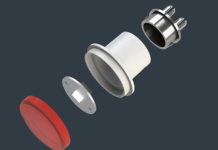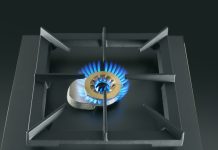
The circular economy is an increasingly important and urgent issue, and the household appliances sector can play an important role. On its website, APPLiA Home Appliances Europe has proposed an interesting contribution on this topic, which we report. “There are many routes to circularity. A circular economy that functions for the EU and its citizens must build on a coherent EU policy framework that pursues a higher degree of sustainability, while preserving the Single Market, competition and innovation. The Single Market works if a harmonised approach to the various circular economy measures throughout the EU is in place. The home appliance sector is very supportive of such a coordinated EU framework for a circular economy. The industry also believes in a future EU sustainable product framework that continues driving innovation and competition and that further improves consumer choices. In this context, manufacturers have been driving circularity through their products for decades and are making all efforts to further raise the bar towards efficiency and sustainability. If you take fridges, for example, a new model today uses only 1/4 of the energy used by a fridge 20 years ago. Home appliances have delivered increasingly higher efficiency standards over the years, not only at the user phase. Circularity in fact is enhanced throughout all the life stages of a device: it starts with the design of the product, then it goes through production, use, repair and recycling. At that stage, the cycle begins again. In a circular economy, products serve their purpose for as long as possible and then are turned into something else, to continue offering a service to users, even as a different product. There are a variety of ways to drive resource efficiency and manufacture sustainable products that advance the circular economy: targeting at-source material efficiency, for instance by reducing the quantity of material used in the creation of products, increasing the efficiency of products during use phase, using more sustainable materials, designing for durability and repair as well as for recovery. Moreover, a whole new range of sustainable services, product-as-service models and digital solutions are underway and can contribute to a better quality of life, innovative jobs and upgraded knowledge and skills. These new models aimed at sustainable goods, services and business, together with traditional sales models, can contribute to more sustainable consumption patterns. As for smart technology, it is here to assist too. In practice, it helps manage the supply and demand for available energy. This smart use coupled with energy and resource efficient appliances will drive down energy and resource consumption and improve overall electricity network stability. In this new market, consumers should be incentivized to use appliances to best match energy availability and be rewarded for doing so.
Product durability is another key aspect to consider. Long lasting products reduce resource consumption and waste and are a central element of Europe’s approach towards circularity, which the home appliance sector supports. It is also a core interest of manufacturers to sell products that last as the reputation of the brands is at stake. Therefore, durability of products is a desirable goal for all. With regard to the claim that the average lifespan of many products has become shorter over the last decades, we would like to highlight that in 1977 the average lifespan of a large appliance, i.e. a washing machine, was 10,87 years. By 2013, that number had increased to 13 years. Therefore, as an example from our sector, the lifespan of a washing machine is longer now, despite the fact that we are definitely using appliances more than we used to do in the past. The lifetime of a product does not only depend on the design of the product but also on consumer usage patterns, product installation, product environment, product maintenance, possible misuse and the available repair options.
With regards to the repair phase, home appliances are repairable today. According to data collected from APPLiA’s membership, 91% of the requests to manufacturers for a repair of a product resulted in an actual repair in 2018. In view of increasing the number of devices that, when in need of repair, are brought to professional repairers for being repaired, APPLiA supports legislation developed in this domain. In this context, consumer protection and safety is a key element to maintain trust with consumers and not to jeopardise efforts for the circular economy. It is not enough for a product to be repaired, it must be repaired right. In fact, the repair of products needs appropriate technical skills that most consumers or nonprofessional repairers do not have. If an appliance is not properly repaired, and safety testing procedures are not respected, consumer safety within the home could be compromised. Consumers should be entitled to have their products ‘repaired right’, having access to repair services by professional repairers. As for what concerns simple maintenance of appliances, those are already widespread today, as recommended by the manufacturer. Digital services offered by manufacturers along with the physical product and future interactive user manuals will make this type of maintenance even more convenient. Such advice can help prolong the useful life of the product – for instance descaling a coffee machine or replacing a filter in a vacuum cleaner. These operations can be carried out safely with little technical skill.
At the recycling stage, there are gaps to be closed. Today, 90% of the materials coming from the officially collected appliances, when they have reached their end of life, are recovered and ready to enter again into the manufacturing circles not only of the home appliance industry, but also for use in other products and loops. The officially collected large appliances, such as fridges, washing machines and air conditioners are recycled to a very high degree and industry-driven recycling schemes succeed in recycling substantial amounts. To further improve circularity all waste needs to be handled by the correct recycling operations. Achieving this would mean that all waste needs to be effectively tracked and reported. In reality, however, two-thirds of precious resources remains undocumented and is not coming back into material loops as secondary raw material, making it unclear how this waste is collected and thereafter treated. The waste market should set the right requirements ensuring that all waste is correctly collected, reported and treated, providing a sufficient competitive economic environment for all involved actors. The EU Waste Shipment Regulation and Waste Electrical and Electronic Equipment Directive (WEEE Directive) Annex VI can be streamlined with circular economy intentions. With easier shipments, millions of products can more easily get a new life, and more resources can be recovered at higher quality at a lower cost.
All of this forms what APPLiA calls a ‘circular culture’, within which initiatives and policy that contribute to a more successful circular economy bring together all societal actors. Policy is most effective if it sets goals that have been conceived with concrete ideas in mind on how the surrounding infrastructure, society and other market players would interact with them. In striving for a circular economy, there needs to be a balanced approach – taking into account material efficiency, energy efficiency, citizen welfare, consumer choice and affordability. All routes that lead to increased circularity”.



